- Home
- Anne Easter Smith
Queen By Right
Queen By Right Read online
ALSO BY ANNE EASTER SMITH
A Rose for the Crown
Daughter of York
The King’s Grace
Touchstone
A Division of Simon & Schuster, Inc.
1230 Avenue of the Americas
New York, NY 10020
www.simonandschuster.com
This book is a work of fiction. Names, characters, places, and incidents either are products of the author’s imagination or are used fictitiously. Any resemblance to actual events or locales or persons, living or dead, is entirely coincidental.
Copyright © 2011 by Anne Easter Smith
All rights reserved, including the right to reproduce this book or portions thereof in any form whatsoever. For information address Touchstone Subsidiary Rights Department, 1230 Avenue of the Americas, New York, NY 10020.
First Touchstone trade paperback edition May 2011
TOUCHSTONE and colophon are registered trademarks of Simon & Schuster, Inc.
The Simon & Schuster Speakers Bureau can bring authors to your live event. For more information or to book an event contact the Simon & Schuster Speakers Bureau at 1-866-248-3049 or visit our website at www.simonspeakers.com.
Designed by Renata Di Biase
Manufactured in the United States of America
10 9 8 7 6 5 4 3 2 1
Library of Congress Cataloging-in-Publication Data
Easter Smith, Anne.
Queen by right / Anne Easter Smith.
p. cm.
Includes bibliographical references.
1. York, Cecily, Duchess of, 1415–1495—Fiction. 2. Richard, Duke of York, 1411–1460—Fiction. 3. York, House of—Fiction. 4. Great Britain—History—Lancaster and York, 1399–1485—Fiction. 5. Great Britain—History—Wars of the Roses, 1455–1485—Fiction. 6. Great Britain—History—House of York, 1461–1485—Fiction. I. Title.
PS3605.A84Q44 2011
813′.6—dc22
2011006027
ISBN 978-1-4165-5047-1
ISBN 978-1-4516-0822-9 (ebook)
For my sister Jill,
another courageous and fiercely loyal woman
Contents
Acknowledgments
Dramatis Personae
The Plantagenets from 1377
The Nevilles
England and France in the Early Fifteenth Century
Baynard’s Castle, London (Prologue)
Part One
1: Raby, Durham, 1423
2: Raby, Durham, 1424 to 1425
3: Raby, Durham, 1425
4: London, 1426
5: Leicester, Summer 1426
Part Two
6: Leicester, Summer 1426
7: Windsor, Winter to Summer 1429
8: England, Autumn 1429
9: Normandy, Spring 1430
10: Normandy, Winter to Spring 1431
11: Rouen, Spring 1431
12: Rouen, May 1431
Part Three
13: Fotheringhay, 1438
14: England and Normandy, 1441
15: Normandy, 1441
16: Rouen, late Summer 1441
17: Rouen, 1442 to 1445
18: France, 1444 to 1446
Part Four
19: Ireland, 1449 to 1450
20: Ludlow, Autumn 1450
Part Five
21: England, Spring 1453
22: England, Summer 1453
23: England, 1454 to 1455
Part Six
24: Ludlow, Autumn 1459
25: England, 1460
Epilogue
Author’s Note
Glossary
Acknowledgments
Cecily’s story from her childhood home, Raby Castle, to Westminster Abbey, where I take her at the end of this novel, could not have been told in such detail without the help of many people.
My thanks to Lord Barnard of Raby for his permission for a private tour of the castle by castle administrator Clare Owen and access to what is believed to have been Cecily’s room in the keep. Clare also gave me copies of Neville genealogy charts, which were most helpful. Thanks also to Helen Duce, Ludlow Castle custodian, who pointed me to archival material that gave me further insight into the history of this beautiful ruin. Then, in Dublin, I was lucky enough to have the help of historian Jenny Papassotiriou at the castle. She not only showed me the remaining medieval parts of the castle but also gave me copies of maps surviving from the period. She told me that she was delighted to learn a part of the castle’s history with which she had not been familiar before researching in the archives for my visit. Thanks, too, to Virginie Beaunier of the Bibliothèque Municipale de Rouen, who found me a medieval map of the city.
One of the delights of doing the research for this book was a reunion with one of my high school friends, Carol Rowntree, and her husband, Donald. My husband, Scott, and I spent several days at their home near Chester, and they drove us many a mile to Ludlow in Shropshire, to Snowdonia and Anglesey in North Wales. I cannot thank them enough, too, for sending me information from Fotheringhay, with the help of their grandson Benjamin, that I was unable to collect for myself. Another friend, Roxana Gendry, is owed love and gratitude for chauffeur duties in Yorkshire and Durham.
Once again I need to thank my friends with medical knowledge who never seem to mind obscure questions about childbirth: OB/gyn nurse practitioner Claire Denenberg, nurse midwife Maryann Long, and OB/gyn physician Jennifer Johnson.
I would be remiss not to again acknowledge my agent of nine years, Kirsten Manges, who believed in me from the start, and my editor, Trish Todd, who never fails to astound me with her insight and gentle patience. It can’t be easy guiding this temperamental Brit!
To my husband, Scott—who knows it is not easy—all love and thanks.
The smartest thing I did during the writing of this book was to find an out-of-home office, for which I am in debt to my friend Mary Schaefer, who rented me a wonderfully bright, spacious room in her 1840s house two streets from my own. Finally, I must acknowledge my friend Cathy Thibedeau, who has dedicated so many hours of her precious retirement to being my “reader” throughout the writing process. A former chair of the English department at Hamilton-Wenham High School, MA, Cathy is used to deconstructing already written novels, so watching a novel take shape was a first for her—and a thrill, she told me, refusing all attempts to thank her profusely for her insights and corrections. Now my gratitude is in print for all to see!
Dramatis Personae
York family (see genealogy chart)
Richard Plantagenet, duke of York
Cecily Neville, duchess of York (see Neville family)
Anne, duchess of Exeter (Nan), Richard and Cecily’s oldest daughter
Edward (Ned), earl of March, Richard and Cecily’s oldest son
Edmund, earl of Rutland, their second son
Elizabeth (Bess), their daughter
Margaret (Meg), their daughter
George, duke of Clarence, their son
Richard (Dickon), later duke of Gloucester, their son
Isabel Plantagenet, countess of Essex and Eu, Richard’s older sister
Henry Bourchier, earl of Essex and Eu, Richard’s brother-in-law
Lancaster family (descended from John of Gaunt and Blanche of Lancaster)
Henry VI, only child of Henry V (see genealogy chart)
Catherine of Valois, his mother
Margaret of Anjou, his wife
Edouard of Lancaster, prince of Wales, his only child
John, duke of Bedford, Henry’s uncle and regent
Anne of Burgundy, duchess of Bedford, his first wife
Jacquetta St. Pol, duchess of Bedford, his second wife; later wife to Richard Woodville
Humphrey, duke
of Gloucester, Henry’s uncle, Bedford’s brother and regent
Jacqueline of Hainault, duchess of Gloucester, Humphrey’s first wife
Eleanor Cobham, duchess of Gloucester, Humphrey’s second wife
Henry Holland, duke of Exeter, great-grandson of John of Gaunt, m. Anne of York
Beaufort family (descended from John of Gaunt and Katherine Swynford)
Henry Beaufort, bishop of Winchester and cardinal of England, their son (see genealogy chart)
Joan Beaufort (see Neville), their daughter
John Beaufort, duke of Somerset, their grandson
Margaret Beaufort, John’s only child
Edmund Beaufort, 2nd duke of Somerset, John’s brother
Henry Beaufort, 3rd duke of Somerset, Edmund’s son
Neville family (see genealogy chart)
Ralph Neville, earl of Westmorland, Cecily’s father
Joan Beaufort, countess of Westmorland (see Beaufort), Cecily’s mother and Ralph’s second wife
Cecily Neville, duchess of York, their youngest child
Richard Neville, later earl of Salisbury, Cecily’s brother and oldest of the Beaufort Nevilles
Alice Montagu, countess of Salisbury, Richard Neville’s wife
Robert Neville, Bishop of Salisbury and Durham, Cecily’s brother
William Neville, Lord Fauconberg, Cecily’s brother
George Neville, Lord Latimer, Cecily’s brother
Edward Neville, Lord Bergavenny, Cecily’s brother
Katherine Neville, duchess of Norfolk, Cecily’s sister
Anne Neville (Nan), countess of Stafford, Cecily’s sister
Richard, earl of Warwick, Salisbury’s oldest son
John, Lord Montagu, Salisbury’s third son
George Neville, archbishop of York, chancellor of England, Salisbury’s fourth son
Ralph Neville, 2nd earl of Westmorland, grandson of Ralph’s first marriage
Woodville family
Richard Woodville, 1st Earl Rivers, chamberlain to the duke of Bedford
Jacquetta St. Pol (see Lancaster), his wife
Anthony Woodville, his oldest son
Elizabeth Woodville, his oldest daughter
Miscellaneous (asterisk indicates fictional character)
William de la Pole, duke of Suffolk, councillor to Henry VI
Humphrey Stafford, duke of Buckingham, Anne Neville’s husband and a king’s councillor
Anne of Caux, the York family nursemaid
*Rowena Gower, Cecily’s attendant
*Constance LeMaitre, Cecily’s attendant and physician
Gresilde Boyvile, Cecily’s attendant
*Beatrice Metcalf, Cecily’s attendant and later Meg’s
*Piers Taggett, Richard’s falconer
Sir William Oldhall, speaker of the House of Commons, one of Richard of York’s councillors
Roger Ree, one of Richard’s ushers of the chamber
Father Richard Lessey, Richard’s chaplain
Sir Henry Heydon, Cecily’s steward
John Tiptoft, earl of Worcester, Henry VI’s treasurer
*Ann Herbert, Meg’s attendant
Joan of Arc, also known as Jeanne d’Arc, La Pucelle or The Maid
Pierre Cauchon, bishop of Beauvais, chief judge at the trial of Joan of Arc
*Mathilda Draper, midwife
Plantagenet
Neville
Baynard’s Castle, London
FEBRUARY 8, 1461
A scream pierced Cecily’s dreamless sleep. She came awake in an instant as every mother might upon hearing her child in distress.
“Margaret,” she muttered into the gloom of her curtained comfort and then called to her attendant to light a taper. Her daughter’s sobbing made Cecily bark a little more impatiently: “Hurry, Gresilde, Lady Margaret is having another of her nightmares.” Hardly noticing the cold of the February night air, she pulled her velvet bedrobe around her, tucked her feet into matching slippers, and flung aside the heavy bed curtain. Dame Gresilde Boyvile held the taper aloft and lit her mistress’s way along the draughty corridor to Margaret’s chamber.
The servants shushing the distraught girl in the bed immediately fell to their knees in obeisance to the duchess of York as she swept in, her long sleeves trailing across the Turkey carpet.
“Margaret, my dearest child,” Cecily clucked, seating herself on the feather mattress and gathering her fourteen-year-old daughter into her arms. “’Twas but a dream. Calm yourself, I beg of you.” She thanked the ladies for their solicitation before drawing the curtains around her and Margaret.
“I dreamed of Micklegate again!” Margaret sobbed. “A terrible, ghastly dream. Why does it not go away?”
Margaret did not have to describe her nightmare. Her mother knew exactly what grisly scene the girl had conjured up.
Cecily’s husband, Richard, and her sweet son, Edmund, had met their death five weeks ago at Wakefield, not far from Sandal Castle, where they and the Yorkist army were keeping Christmas. They had not expected the king’s forces to come so soon nor to attack in the holy season, but it seems they were surprised, outnumbered, and Richard lost his life on the battlefield. Edmund, poor seventeen-year-old Edmund, Cecily grieved, was cut down in cold blood while attempting to flee the field. Lord Clifford had found him hiding under a bridge and, crying vengeance for his own father’s death at St. Albans, had slit the lad’s throat while his soldiers held him down. Her gentle, second-oldest son—a tall, good-looking charmer like his elder brother Edward—was no more, and his head, together with those of Richard and her favorite brother, the earl of Salisbury, were set atop the city of York’s Micklegate on the orders of Queen Margaret. It was that hideous image that haunted young Meg night after night.
“Oh, why did they have to die?” Margaret sobbed.
Cecily tightened her hold on Margaret, inhaled the rosemary sweetness of the girl’s long, fair hair, and squeezed her eyes tightly shut. She had not wanted to believe the messenger’s tale of disaster. It had all happened so far away and, without physical proof, she could not grasp the reality of it. Her Richard beaten, killed, beheaded? Impossible. He had been part of her life since she was eight, and she could not imagine life without him.
“Oh, my dearest love . . .” she murmured.
She was unaware that she had spoken aloud until she felt Margaret gently pull away to study her. Cecily held herself erect, her face resuming the inscrutable expression she had learned to affect when in the public eye. But it was harder now after Wakefield.
“I am truly sorry, Mother,” Margaret whispered. “I was only thinking of my own anguish.” Her intelligent gray eyes searched her mother’s still lovely face for forgiveness and some uncharacteristic show of emotion.
Cecily was moved and tears threatened. Don’t cry, Cis, she told herself. This is not the time to cry. You must be strong for the children and strong for all the others who have given their service—and now their lives—to Richard’s cause.
“You thought I had a heart of stone? Nay! I must tell you that my loss is so great I feel my heart is shattered in shards that pierce my skin and make me want to scream in agony.” She pressed her hand to her heart and groaned. Then she raised her sad eyes to Margaret’s face and took the girl’s trembling chin between her fingers. “You know why your father and your brother died, my child. They died to right a wrong done to our house, and your father knew full well the price we all might have to pay. ’Tis the price all those born of royal blood are in danger of paying. You too must learn to sacrifice for your family whether it be the house of York or that of the man you wed. I will tell you now, Margaret, that as a woman born to a noble house, you may have your share of happiness, but you will also know great heartache, for we are at the mercy of our menfolk. We must accept God’s will and bear it with dignity worthy of our name. Learn this now and well. You must learn how to bridle those feelings I see welling up in you every day. ’Tis what I have done these thirty years as duchess
of York.” She bent and kissed Margaret’s face, smiling at her daughter’s astonishment. “Aye, Meg, I have as passionate a nature as you”—she tapped her breast—“but I have kept it to myself in here . . . except when I was with your father.” She chuckled. “I confess I was a handful when I was your age.”
Meg smiled, and Cecily pulled her into her arms again. “You will always have solace in prayer, my dear. Our Blessed Mary, saint of all women, is always there to listen.” The two women clung to each other for a few moments before they slid to their knees on the floor and made their supplications to the Virgin. Then Cecily tucked Meg into bed and padded wearily back to her own chamber.
Gresilde had thoughtfully placed a hot stone in the bed, and Cecily hugged its smooth warmth to her, curling herself into a ball and willing herself to sleep. Instead, the effort she had made for Margaret and the familiar position of childhood released all her pent-up despair, and her tears soon soaked her pillow. She put out her hand and felt the cold, empty place between the sheets where her husband should have been lying, and the ache in her heart became a violent pain. For a month she had maintained the demeanor of a noblewoman whose nickname—Proud Cis—had been well earned in the past few tumultuous years, but at that moment with her defenses finally breached, she allowed the flood of tears to spill unheeded and her thoughts to return to that golden autumn when Richard had come riding into her life.
She managed to smile then through her sniffling: Nay, she corrected herself, ’twas I who rode into his.
PART ONE
“A gracious lady!
What is her name, I thee pray tell me?”
“Dame Cecille, sir.”
“Whose daughter was she?”
“Of the Earl of Westmorland, I trowe the youngest,
And yet grace fortuned her to be the highest.”
FROM A FIFTEENTH-CENTURY BALLAD,
ANONYMOUS
1
Raby, Durham, 1423
Faster, Father!” Cecily called to the rider on a handsome roan courser beside her. Her bright green liripipe streamed out behind her as father and daughter cantered across the parkland that surrounded Raby Castle and made for the forest beyond. A falconer and two grooms accompanied them along with several eager hunting dogs, held firmly in control by fewterers.

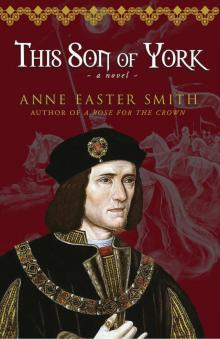 This Son of York
This Son of York Queen By Right
Queen By Right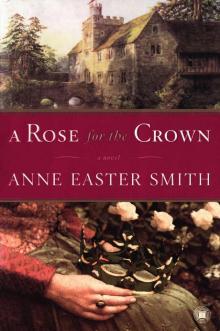 A Rose for the Crown: A Novel
A Rose for the Crown: A Novel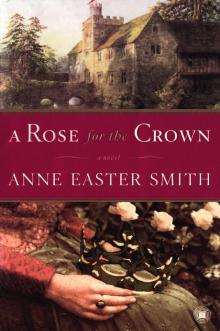 A Rose for the Crown
A Rose for the Crown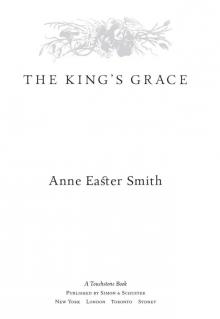 The King's Grace
The King's Grace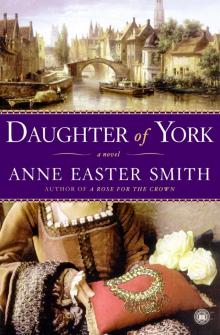 Daughter of York
Daughter of York Royal Mistress
Royal Mistress